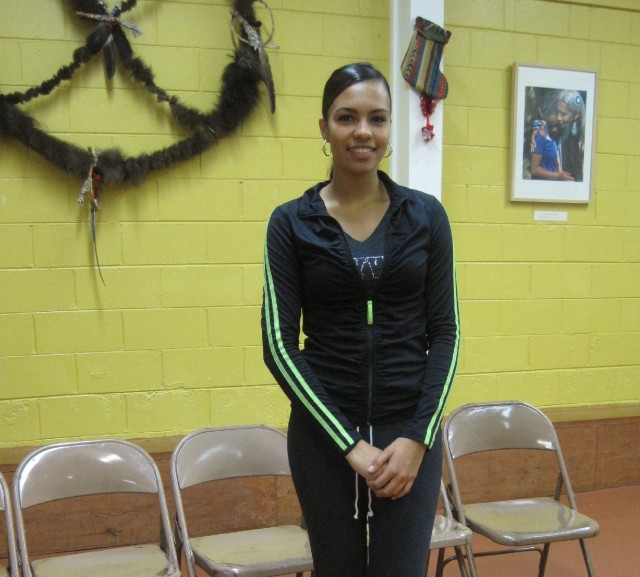
Editor’s Note: Many Native Americans are reconnecting with the traditions of their ancestors—to eat healthier foods and get more exercise with traditional dance and drumming. At the Intertribal Friendship House in Oakland, there’s a weekly dinner with traditional recipes, followed by a community dance. Before dinner, 19-year-old Juliet Small teaches Native American dancing to young girls. As part of our ongoing series of first-person health profiles called “What’s Your Story?” we hear from Small who is Apache, Navajo, Cherokee, and Azteca. She has been dancing since she was three-years-old. Small discusses how dancing has brought healing to her family and community. Reporter: Zaidee Stavely
By Juliet Small
Growing up in the Oakland area, it sometimes seems there’s not a lot of outlets for people to get away from the negative aspects of life. There are always so many things you can get caught up with. You know, hanging out with the wrong people, doing the wrong things with those people. But because I’ve always had dancing, that’s always kept me on the right path, to where I want to dance for myself, to keep up with my culture, and to share my culture with everybody else. And when I dance, I’m extremely happy. No negative thoughts. I feel light. I feel relieved of stress.
The most inspiring thing about dancing and teaching this class is that you have two-year-olds and three-year-olds coming to dance class who are ready to dance and who tell their parents every day, “I want to go to dance class! I want to go to dance class!” And their parents can be tired and they’ll tell me, “My daughter just had to come today. She just had to be here.” It makes me really happy to see that kids want to keep going with their traditions — they want to keep their culture alive.
With [me] teaching them these stories and teaching our tradition and our culture, I'm bringing them healing and health because they can share it with other people. They can share it with their sisters, brothers, aunties, uncles, people who carry bad medicine within them, and explain to them why it’s healing for them. And within their own person, they will be able to heal themselves based on the stories and the teachings.